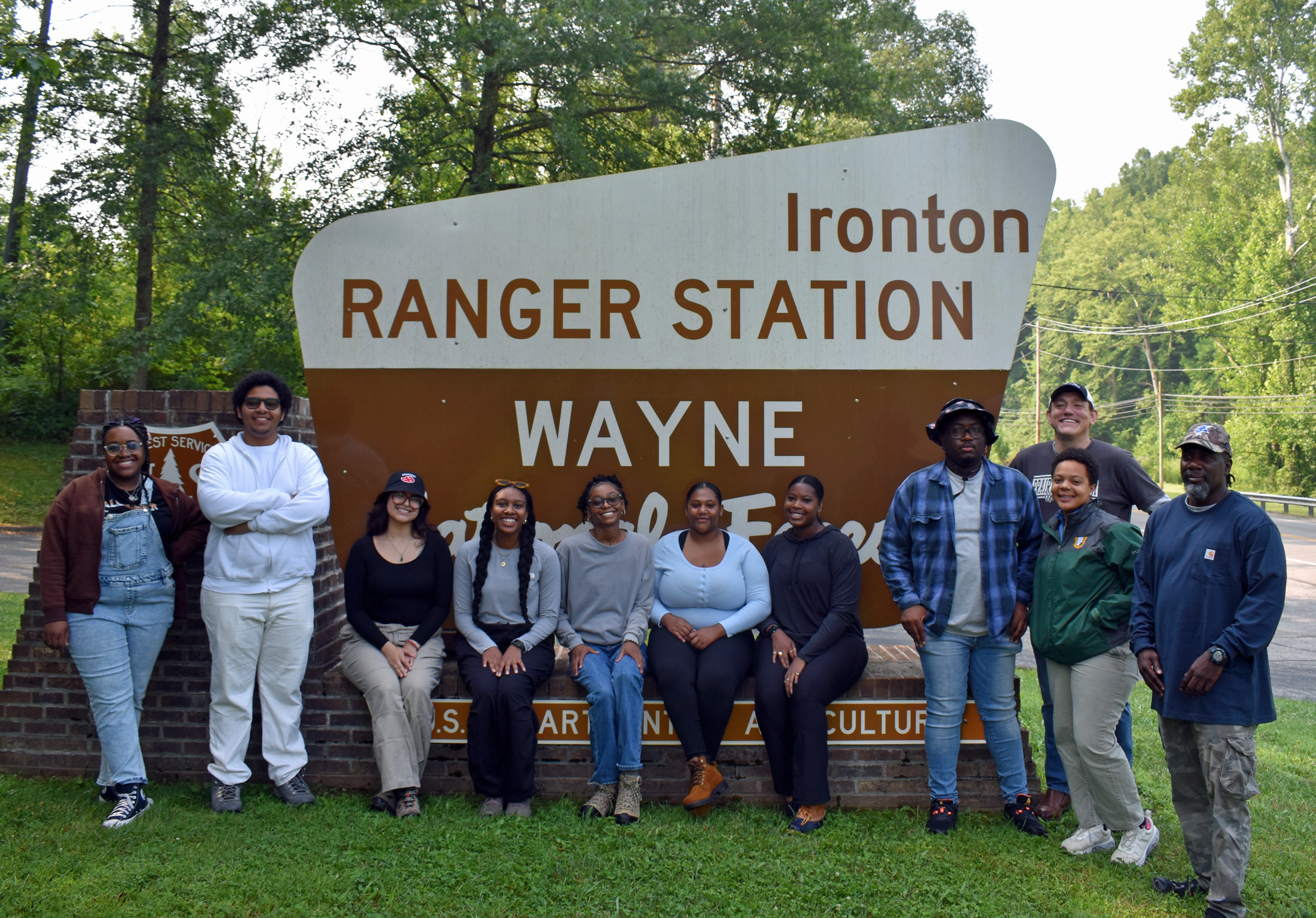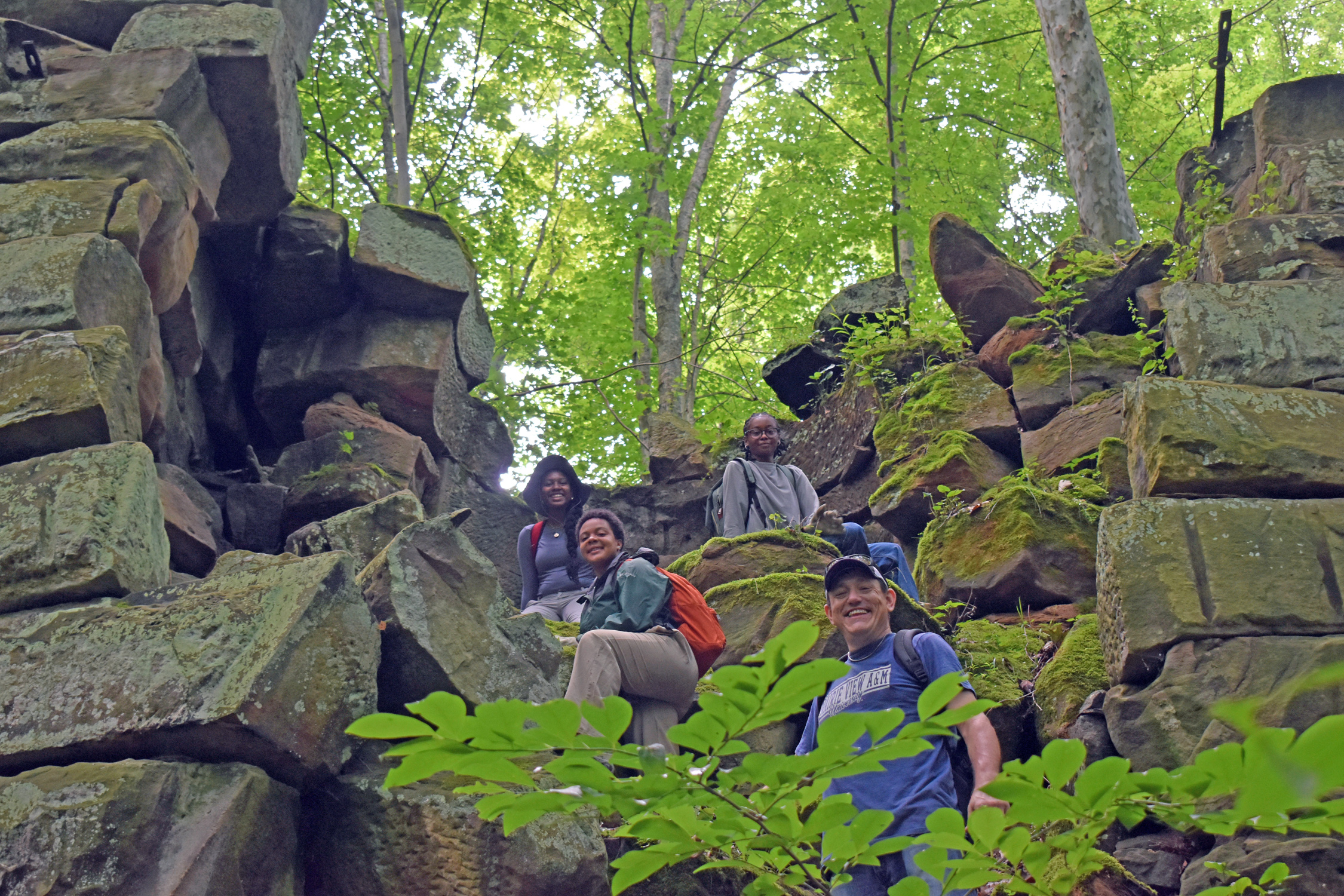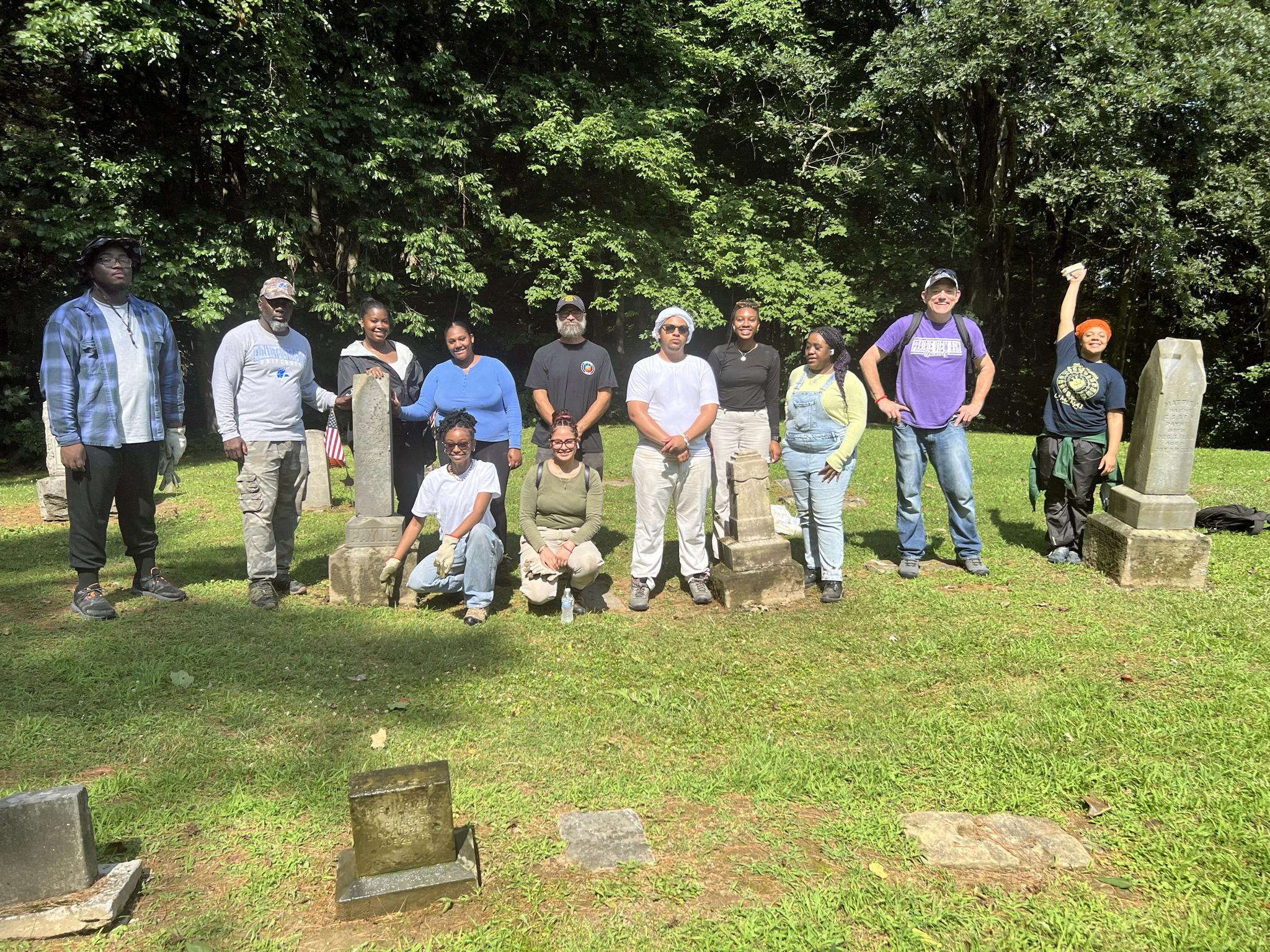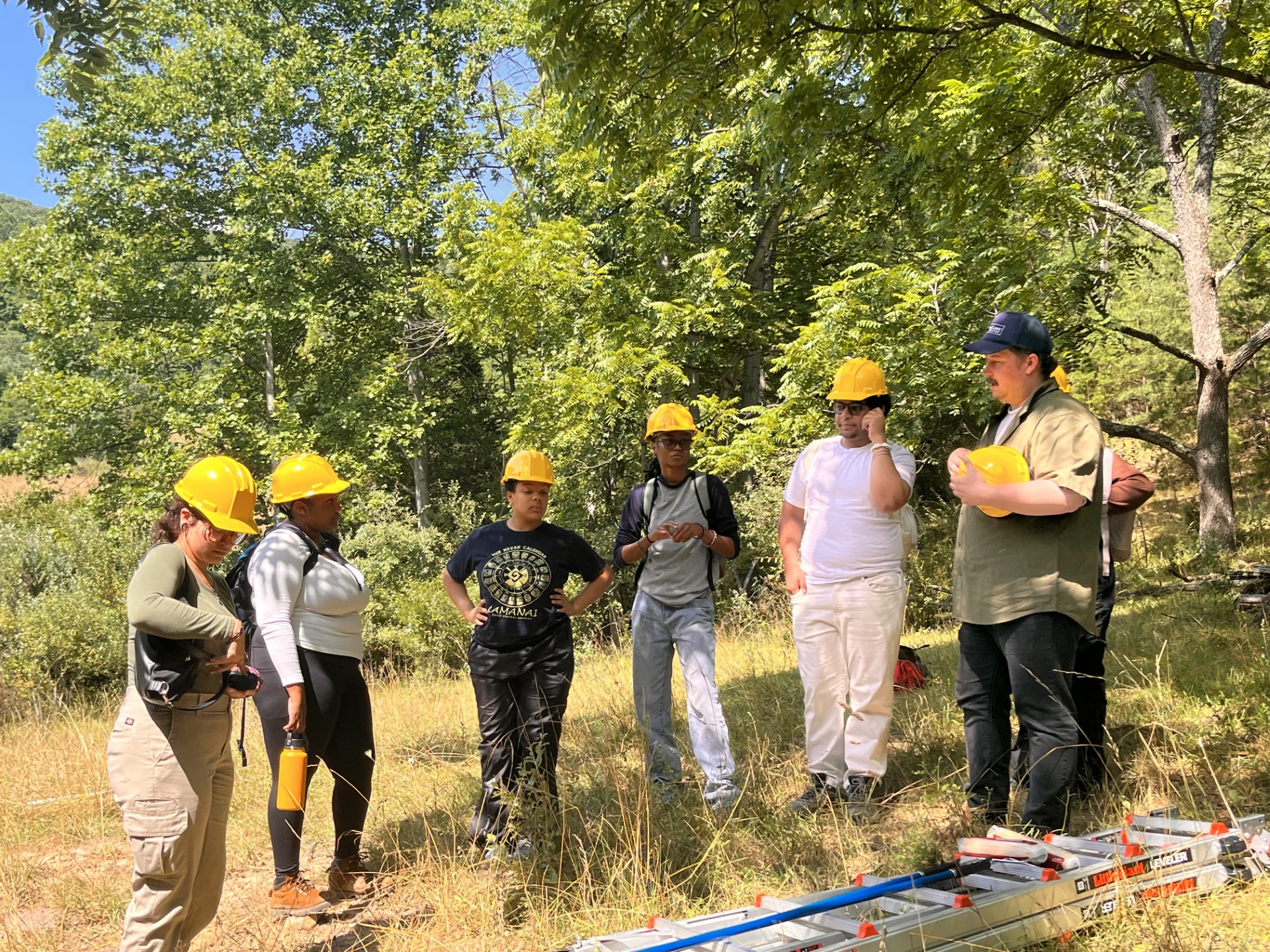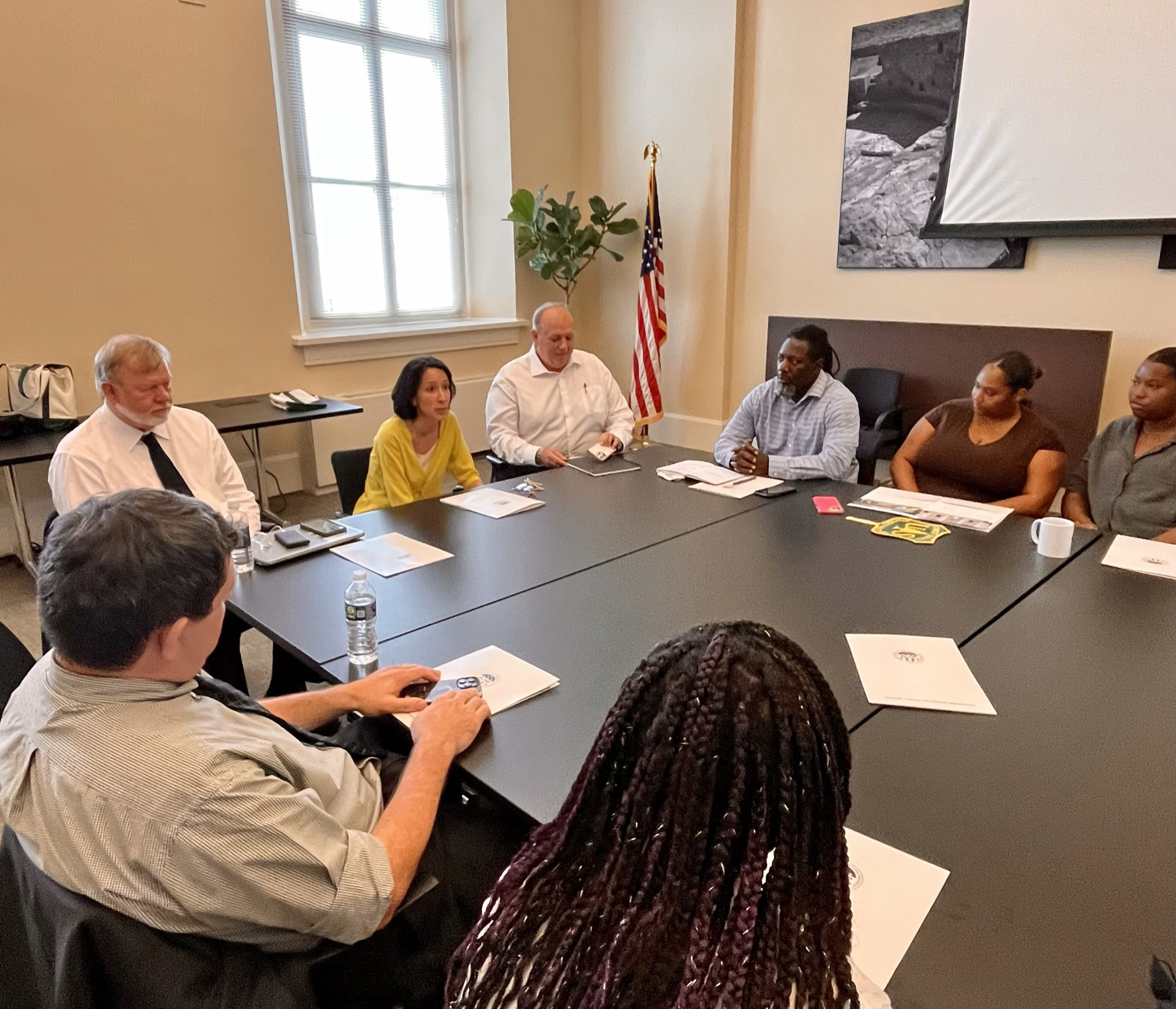WASHINGTON, D.C.— Nine Historically Black Colleges and Universities (HBCU) students last week completed an almost four-week internship called Cultural Heritage in the Forest (CHIF). It is a collaboration among the Advisory Council on Historic Preservation (ACHP), USDA Forest Service’s Heritage Program, Wayne National Forest in Ohio, and Monongahela National Forest in West Virginia. CHIF is a hands-on program for students at HBCUs, training them in cultural resources management, historic preservation, and conservation.
The goal of CHIF is to train young professionals of color to enter historic preservation careers within the Heritage Program and further diversify career paths that traditionally do not reflect the diversity of the nation.
CHIF began on July 10 with a week of virtual orientation programming. The nine students and their two faculty advisors spent one week in Wayne National Forest July 16-23 where they met with Forest leadership; District Rangers; and Logan York, the Tribal Historic Preservation Officer from the Miami Indian Tribe. They visited various historic sites in the Forest, including Lake Vesuvius Recreation Area, Civilian Conservation Corps-era Black history sites, Poke Patch, Tinkers Cave, Shawnee Tower, Payne Cemetery, and Payne’s Crossing Farmstead. Activities included archaeological testing, stewardship projects, and conducting archaeological surveys.
The students traveled to the Monongahela National Forest July 24-28 and met with Forest leadership, preservation partners, and curators from Grave Creek Mound Archaeological Complex. They visited Seneca Rocks Discovery Center, Sites Homestead, and Spruce Knob. Activities included a collections workshop, conducting conditions assessments and mapping at historic properties for adaptive reuse, and learning about Tribal relations.
On the final leg of their trip July 30-August 2, the students spent time in Washington, D.C. meeting with Forest Service and ACHP leadership, including ACHP Chair Sara Bronin, Vice Chairman Jordan Tannenbaum, and Executive Director Reid Nelson. They attended career workshops and learned more about why historic places are preserved. They ended their time in Washington with a tour of the Frederick Douglass National Historic Site.
The students who participated in CHIF are the following: Abraham Reid Jr., Elizabeth City State University, NC; Acacia Tyler, University of Central Missouri; Alanah Saunders, Josué Woodard, and Summer Ray, Hampton University, VA; Celeste Metayer and Leah Anderson, Howard University, DC; Erin Simms, Claflin University, SC; and Nelida Ornelas-Rosales, Lincoln University, PA.
The two faculty advisors were DeWayne Moore, Prairie View A&M University, TX, and Latif Tarik, Elizabeth City State University.
Over the course of the four-week program, both fieldwork and coursework exposed students to the different facets of historic preservation and the critical work of the Heritage Program. The Forest Service manages 193 million acres of forest land across the nation. Students are able to pursue career tracks through the USDA Forest Service Pathways program.
For more information about CHIF, contact Lynne Richmond at lrichmond@achp.gov, Gavin Hale, Heritage Program Manager at the Monongahela National Forest at john.hale@usda.gov, or Andy Tremayne, Heritage Program Manager at Wayne National Forest, at andrew.tremayne@usda.gov.
Learn more about the partners in CHIF:
